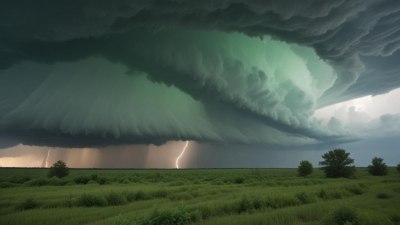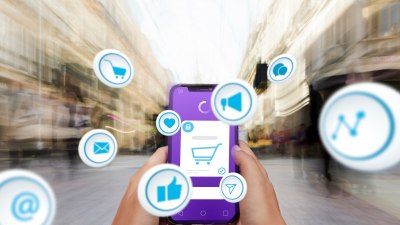What Causes the Sky to Turn Green Before a Tornado
Discover the science behind the green sky phenomenon before tornadoes and its implications.

This image was created with the assistance of Freepik
The green sky phenomenon, often observed before a tornado, intrigues meteorologists and storm chasers alike. This unique visual spectacle can be attributed to several atmospheric conditions that precede severe storms. In order to understand why the sky turns green, we need to explore how light interacts with rain and hail, the structure of storm clouds, and the dynamics of severe weather.
1. The Role of Storm Clouds
Before tornadoes form, they are typically preceded by severe thunderstorms characterized by a specific type of cloud formation called a supercell. These supercells are massive storms that contain rotating updrafts and can produce severe weather including heavy rainfall, hail, and tornadoes. Within these clouds, the presence of large amounts of water vapor and atmospheric particles play a crucial role in the scattering of light. When the sunlight interacts with moisture-laden clouds, the light can scatter in a variety of ways.
2. The Science of Light Scattering
Light scattering is influenced by the size and composition of the particles present in the atmosphere. In a thunderstorm, as rain and hail begin to accumulate, the cloud structures can vary significantly in depth and density. This depth is crucial because it determines how light penetrates through the storm. Typically, clouds during a storm have a darker base with lighter tops, allowing for varying amounts of sunlight to be absorbed and refracted. This can result in a greenish hue when conditions are right, particularly when there is a substantial amount of precipitation.
3. How the Green Sky Forms
The green color that can sometimes be seen in the sky is primarily due to the way that light interacts with the precipitation falling from the storm clouds. As sunlight enters the cloud system, it is scattered by water droplets, and if the cloud is filled with enough water (as is often the case in severe thunderstorms), it can create a striking effect. The specific wavelength of light that is scattered when conditions are optimal can produce a greenish tint. This happens as longer wavelengths (red and yellow) are scattered out of the line of sight, leaving predominantly shorter wavelengths (greens and blues) visible to our eyes. This phenomenon is often most visible when the environment includes dense, heavy rainfall or hail.
4. Tornado Development
The presence of a green sky indicates an active, volatile storm that could potentially lead to tornado formation. Tornadoes often develop in severe thunderstorms, particularly supercells, when conditions are right. Meteorologists note that the greenish hue can signal significant atmospheric instability—a key ingredient in tornado development. The energy within these storms can be so powerful that they initiate the formation of a tornado. So, while not every green sky results in a tornado, it reflects an environment ripe for severe weather.
5. Common Misconceptions
Despite the strong correlation between a green sky and severe weather, not everyone understands the underlying science. A common misconception is that a green sky is directly indicative of a tornado’s imminent arrival. In reality, while it may suggest an active storm system capable of creating tornadoes, the green sky is not a definitive warning sign. Many places experience the green sky effect without any associated tornado activity. Thus, while meteorologists regard it with caution, they stress the importance of watching other signs of severe weather, such as rotation in the clouds, intense rainfall, or hail.
6. Observing the Green Sky Phenomenon
For storm enthusiasts and meteorologists alike, observing a green sky can be both mesmerizing and alarming. People living in tornado-prone areas might experience these phenomena several times throughout severe weather season. It is essential, however, for individuals to understand what to do when they see a green sky. Those in areas where severe storms are predicted should take heed of weather warnings and prepare appropriately. It is advisable to have a safety plan in place to ensure personal safety when storms are approaching.
7. Historical Accounts and Studies
The green sky phenomenon has been noted in numerous severe weather accounts throughout history. Meteorological studies have documented its occurrence and relation to tornadoes and severe thunderstorms. Researchers have deployed radar and advanced imaging techniques to analyze storm cells exhibiting this phenomenon. In many cases, correlating the green sky with tornado incidents has helped improve storm prediction models. Moreover, the phenomenon has gained traction within storm chasing communities as a recognizable marker of imminent severe weather.
8. Modern Technology and Prediction
Advancements in weather technology have greatly enhanced our understanding of severe storm behavior and phenomena such as the green sky. Doppler radar, satellite imagery, and weather modeling systems provide real-time data on storm development and intensity. These technologies have helped meteorologists track storms more accurately, providing timely warnings to communities at risk. With real-time updates, communities can better respond to the threats posed by severe storms, including those that produce tornadoes.
In summary, the green sky phenomenon serves as a fascinating glimpse into the complexities of weather and atmospheric science. While it may be a visually striking event, it is essential to understand its implications within the context of severe weather. The greenish hues indicate that storm conditions are present and potentially dangerous, but they are not direct indicators of tornado activity. Staying informed through weather alerts and understanding the science behind such phenomena can help individuals be better prepared for the unpredictable nature of severe storms. Thus, the next time you see a green sky, remember the intricate processes at play and take the necessary precautions to stay safe during extreme weather events.











